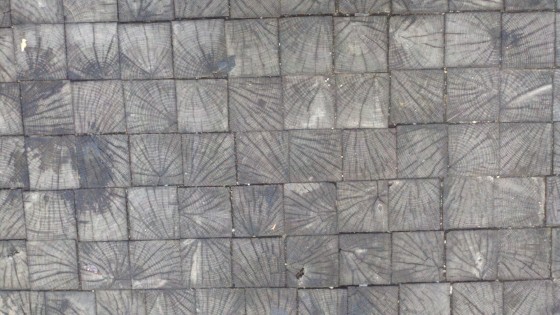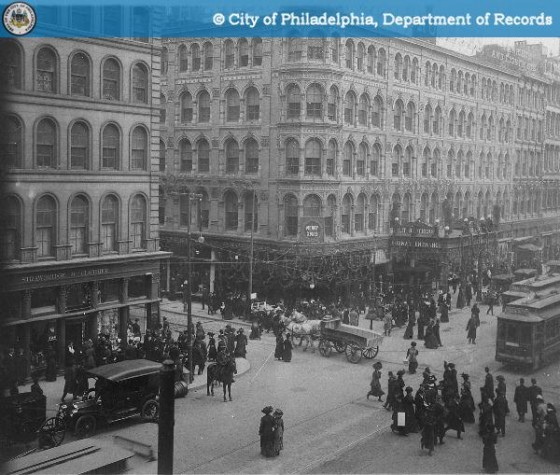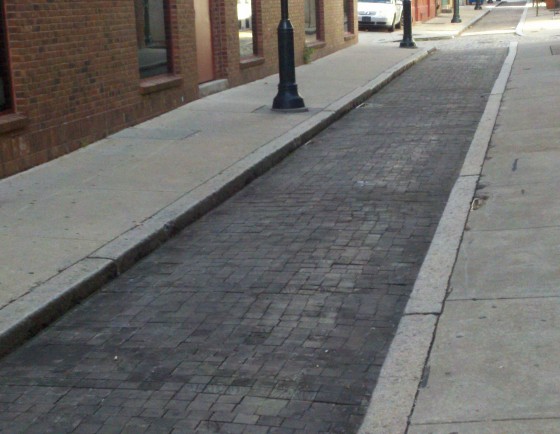If you are ever on Locust St. between 12th and 13th Sts., you might notice the last wooden street in Philadelphia and possibly America. Camac St., the so-called “Little Street of Clubs,” is paved with one-thousand oak cubes between Locust and Walnut Sts. It is the remains of a very short, rather unfortunate fad in urban planning.
In 1910, Market St. was extremely noisy. First of all, there were the thousands of people milling around everyday. Then all the horses… doing their business everywhere, making all kinds of horse sounds. Street vendors haggling with their customers, dogs barking, sheep braying. None of this cacophony compared to the horse hooves constantly bouncing off Belgian Blocks. This sound drove business owners crazy. They would have to shout over it while conducting their daily affairs.
The Merchant Clubs of the day demanded a solution, and their friends in the city government hooked them up. They paved Market St. east of City Hall with different shaped blocks of pine and oak, muffling the noise of the horse’s hooves. The plan was so successful that over 20 miles of streets in the city were soon paved with wooden blocks. Some were neat and symmetrical, with perfectly square blocks, others were made up of a mishmash of different sized pieces of wood.
In very short order, this proved to be a VERY bad idea. Horse pee got absorbed into the the blocks and stunk, especially in the summertime. Within just a few years, much of the wood rotted and fell apart. Once automobiles hit the streets, that was pretty much it. One block of Camac St. is the only survivor. The original street sat untouched until the 1990s, albeit in terrible shape. A plan was made in 1997 to restore and replace the entire street, but there was one little problem.
Where do you get wooden paving blocks? The project was delayed for over a year while Camac street lay in ruin, ripped apart without a plan to put it back together. Finally, deal was made with a mill that produced blocks made from a wood that was hard enough to resist weather and cope with heavy people-moving machines rolling over it. The street you see today is a simulation of what the street looked like when the wood was first installed.
If you ever get a chance, go out to see this thing. Don’t forget your horse!
GroJlart, philaphilia.blogspot.com



